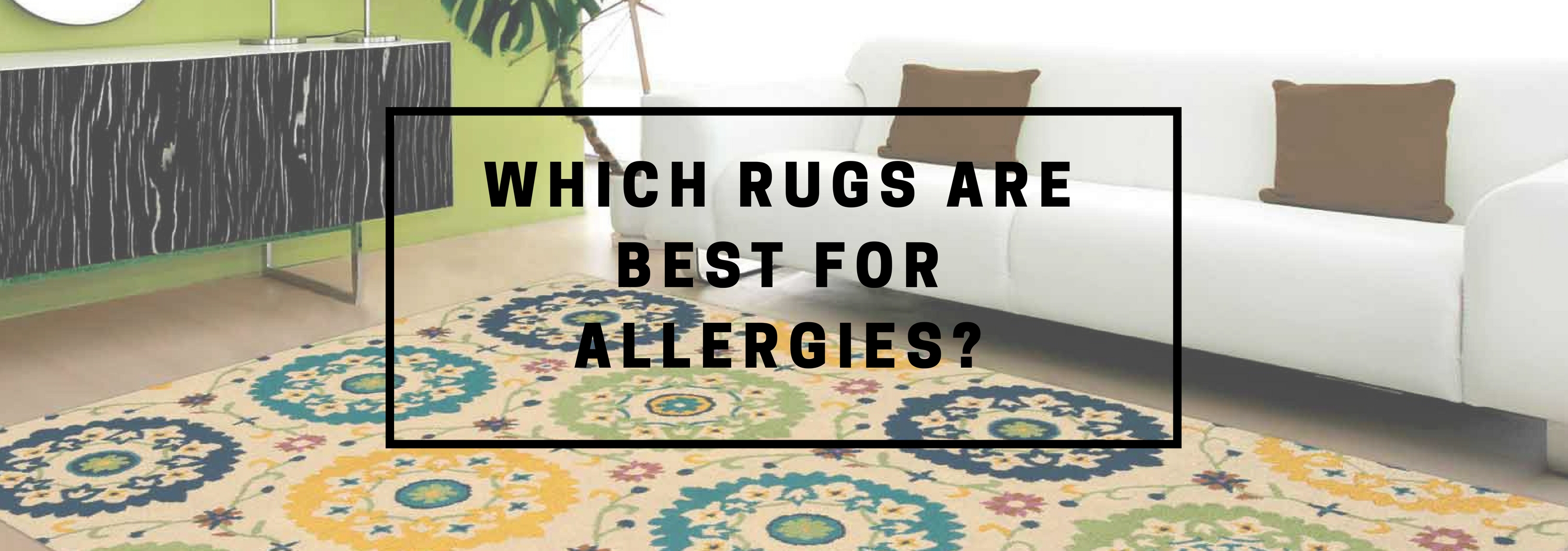
Rugs vs Allergies
Rug allergies are something many people don’t think of when buying a rug. For most people, it may never be an issue, but if you find yourself coughing and sneezing and are unsure why – it could be your rug.
Luckily, when it comes to rug allergies for most cases it’s an easy issue to tackle.
So what causes it?
There are many reasons to why your allergies could flare up in certain rooms within your home. These could be due to dust, pollen, pet dander and other organisms which can aggravate allergies and asthma.
Sometimes, rugs and carpets can gather this foreign objects which can help to irritate these allergies.
Despite this, there are still many ways for people with allergies and sensitivities to those allergens to have rugs in their home without having an adverse reaction.
Curious of how to ease the sneeze? Then read on!
Allergens: So What’s The Cause?
Before we get to the easy solution to your rug allergies, we should talk about the cause of the sneeze.
Let’s start with pets…
Your dog or cat, precious as they are, can have aggravating effects to your allergies. When it comes to rugs, it may be the case that your rug can help to collect pet dander. This dander can also collect pollen and dust which can all worsen allergies.
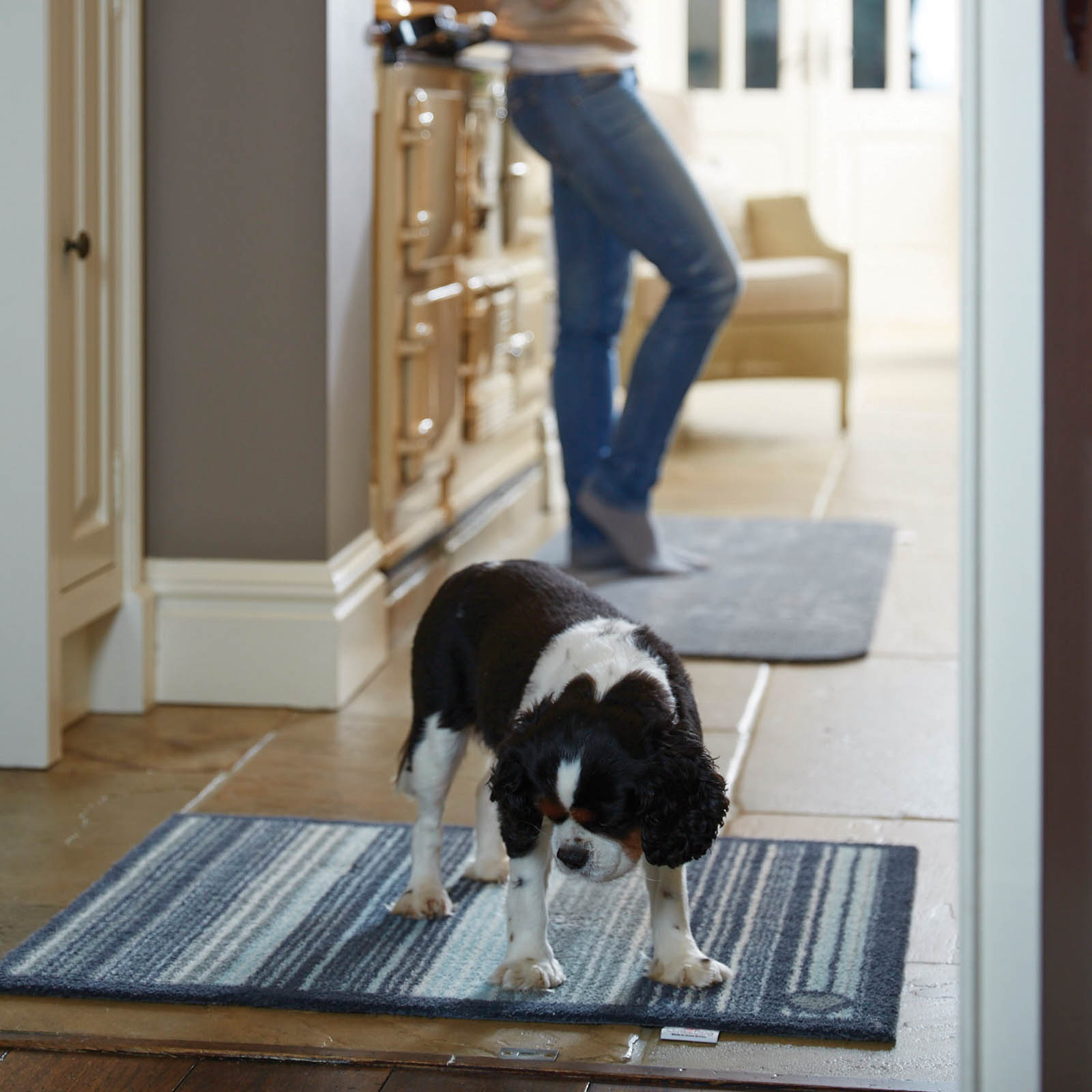
Mould can be another common cause for allergies within the home. Having damp surfaces can promote the spread of mould and mildew if it doesn’t dry thoroughly.
However, it can be simple to prevent – by ensuring your home has good air circulation and your rug is thoroughly dried, especially after washing.
It might be the fact that you’re allergic to foreign objects from the outside world.
When it comes to rug allergies, most of the time it’s not the rug that causes the issue but, but what it’s helping to collect and ‘store-up’.
Allergens such as pollen gets brought into the home through outdoor contact by clinging onto clothes, shoes, hair and through the air. If you are a bit prone to neglecting frequent house cleanliness and letting dust build up in your home, this can help to aggravate allergies.
Allergies: The Prevention And Solutions
Now that you’ve realised that there are several different reasons making you sneeze, what can you do now?
It’s really quite simple to get in control of your allergies and live in perfect harmony with your rug.
If you have severe allergies, vacuuming and cleaning regularly is your very best option – to help remove all those irritants collecting in your home.
You probably already know that vacuuming is a good place to start. But what you may not realise is that there’s a right and a wrong way to vacuum to best help your rug allergies.
- Wrong: briefly going over the rug a few times a month with the vacuum you inherited from years ago.
- Right: investing in a vacuum with tight connections and a built-in HEPA filter and vacuuming thoroughly one to two times a week. Also, flip areas rugs over and vacuum on the back, as well as the front.
Here’s a short video demonstrating how to vacuum a rug and which attachments we recommend:
If you have severe allergies, try to hand off vacuum duty to someone who doesn’t or wear a dust mask.
As well as vacuuming your home and furniture thoroughly and regularly, we advise that you should have your rugs professionally cleaned every six months. Make sure it dries completely afterward so the dampness won’t attract mould or mites.
Cleaning up any spills promptly will also help to prevent the growth of mould. Another step you can take to reduce allergens is to request that visitors entering your home remove their shoes to keep from bringing in foreign substances.
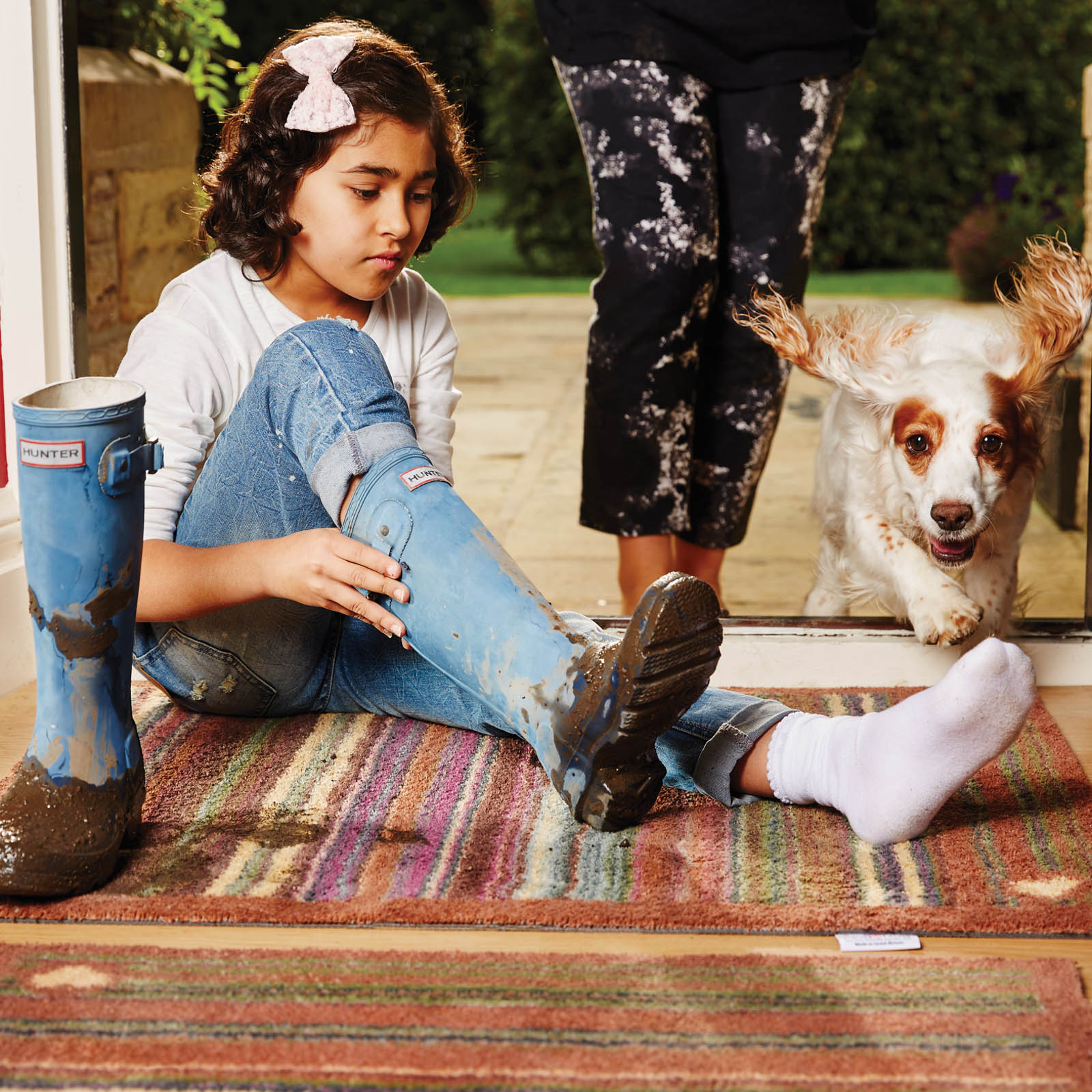
By following some of these recommendations listed here, you can transform your evenings from streaming eyes and sniffly noses to a calm and relaxing time.
Types of Rug Allergies And Their Solutions
If cleaning isn’t improving you rug allergies, is important to identify what your allergy is. Even if your rug allergies have calmed down slightly, it’s good to understand what the irritant is for you. Latex allergies are a common and potentially severe allergy that rugs can cause to flare up.
Dust Allergies
Dust is probably the leading cause of allergies when it comes to rugs. Although it’s not strictly an allergy to the rug, dust particles get trapped in fibres of the rug, which can worsen the issue.
Shaggier rugs are worse for this allergy due to their thick pile trapping more particles.
Not everyone is sensitive to dust, but if you feel this may be the issue – it’s not a difficult problem to work with.
Regular cleaning is the best solution, it’s a bit more effort but not strenuous to ensure you can keep your beautiful rug and stay sneeze free.
In order to make your rug dust-free, make sure to clean your rug on regular basis with an effective vacuum. Vacuum clean your rug daily and if it is washable, wash it at home every 1-2 months.
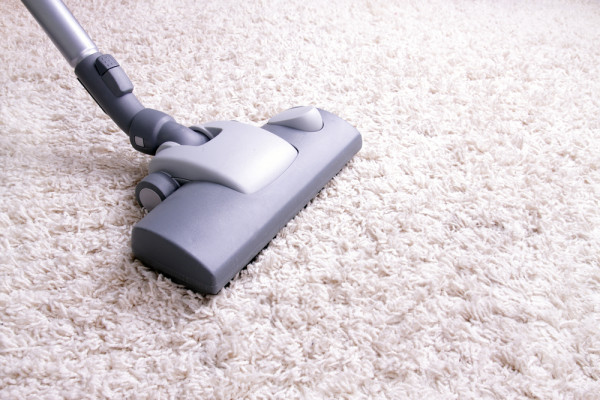
Pollen Allergies
Pollen is a common trigger of seasonal allergies. They enter human noses and throats, which many people know as hay fever or rose fever (depending on the season in which the symptoms occur). Of all the things that can cause an allergy, pollen is one of the most widespread.
Pollen allergies can vary, so it might be helpful to find out what sort of pollen irritates you and when that is most prevalent in the year.
Once you identify this, keeping windows shut around this time of year can help prevent the pollen getting onto your rug.
If pollen does get indoors, it doesn’t mean the end of your rug. Similarly to dust, regualr cleaning can help eradicate the irritants from the fibrers of your rug.
However, it may be an idea to consider a high-efficiency particulate air (HEPA) filter in your vacuum cleaner. HEPA filters are just more efficient when it comes to tinier pollen particles.If you don’t have one. you may be making your symptoms worse by stirring up pollen that has settled on your floor and furniture.
Using HEPA filters in your air conditioner or heating system can also help ease allergy symptoms.

Pet Allergies
Pets can be your best friends, but if you have allergies or asthma, they can also be your worst enemy. Pets shed dander, a combination of dead skin cells and hair (or feathers), which can trigger asthma attacks and allergic reactions in some people.
Keeping your pets off carpets and furniture can help prevent the build up of dander, or even restricting them to certain areas of the home.
You can also invest in allergen-resistant bedding or throws over furniture which are easier to wash or swap for new ones.
In addition to that, you guessed it – clean, wash, vacuum!
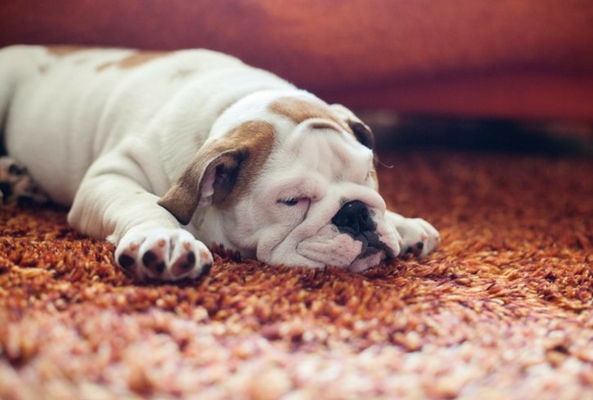
Asthma
There are many kinds of asthma triggers. These include air pollution, pollen, cold weather, colds and stress.
Some of the strongest triggers are found in the home. These include dust mites, cockroaches, mould and tobacco smoke. Triggers can be allergens or irritants.
Allergens are things people are allergic to. Irritants are things that irritate the lungs. Your doctor can help you figure out what asthma triggers may affect your family.
Some studies have said that rugs that trap the irritants aid asthma from preventing the foreign objects from being airborne. But if you are finding your asthma is flaring up – take a look at your rug
Again, cleaning can help with this – and if you’re the sufferer, invest in a dust mask for when you’re cleaning. Beating a rug regularly can also help reduce the shedding or dust build up for a deeper clean.

Latex Allergies
People can sometimes overlook the fact that the latex can cause allergic reactions. Commonly, rugs use latex backing in order to prevent a rug from sliding on the floor. Such latex may cause allergic reactions in some susceptible people.
The reaction of a latex allergy can be much more severe than with dust. The symptoms of latex allergy include a rash, whizzing or swelling of skin. If you notice any such symptoms, consult your doctor as soon as possible.
When it comes to the solution to latex rug allergies, cleaning can’t aid you.
It doesn’t mean you can’t own a rug – you just have to be a bit more involved in the research when buying a rug!
When you go to purchase a rug, simply ask the salesperson for rugs with plastic backing instead of latex backing. Other materials like rubber are also found to be non-allergic and can be considered while buying a rug.
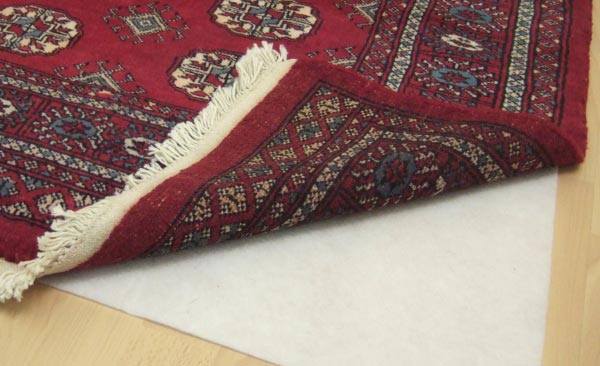
What Kind of Rug is Best?
Synthetic materials are much more suitable for allergy sufferers because the materials repel allergens. The most effective allergy-controlling rug fibres are nylon (polypropylene).
You should also consider the pile of a rug. The larger and plusher a rug, the harder it is to remove those foreign irritants from it. Low-pile rugs are much better, because fewer allergens get stuck in the fibre and they are better at keeping allergens away.
Natural materials like cotton, sisal, jute, sea grass, and hemp are often woven into thinner rugs, making them smart options. These also tend to shed less, which can help when it comes to irritants. Wool rugs are prone to shedding which may be an irritant with new rugs if you’re prone to allergies.
Alternatively, you can select smaller machine-washable rugs that can be washed in the hot water – which is necessary to kill off mites and other allergens.
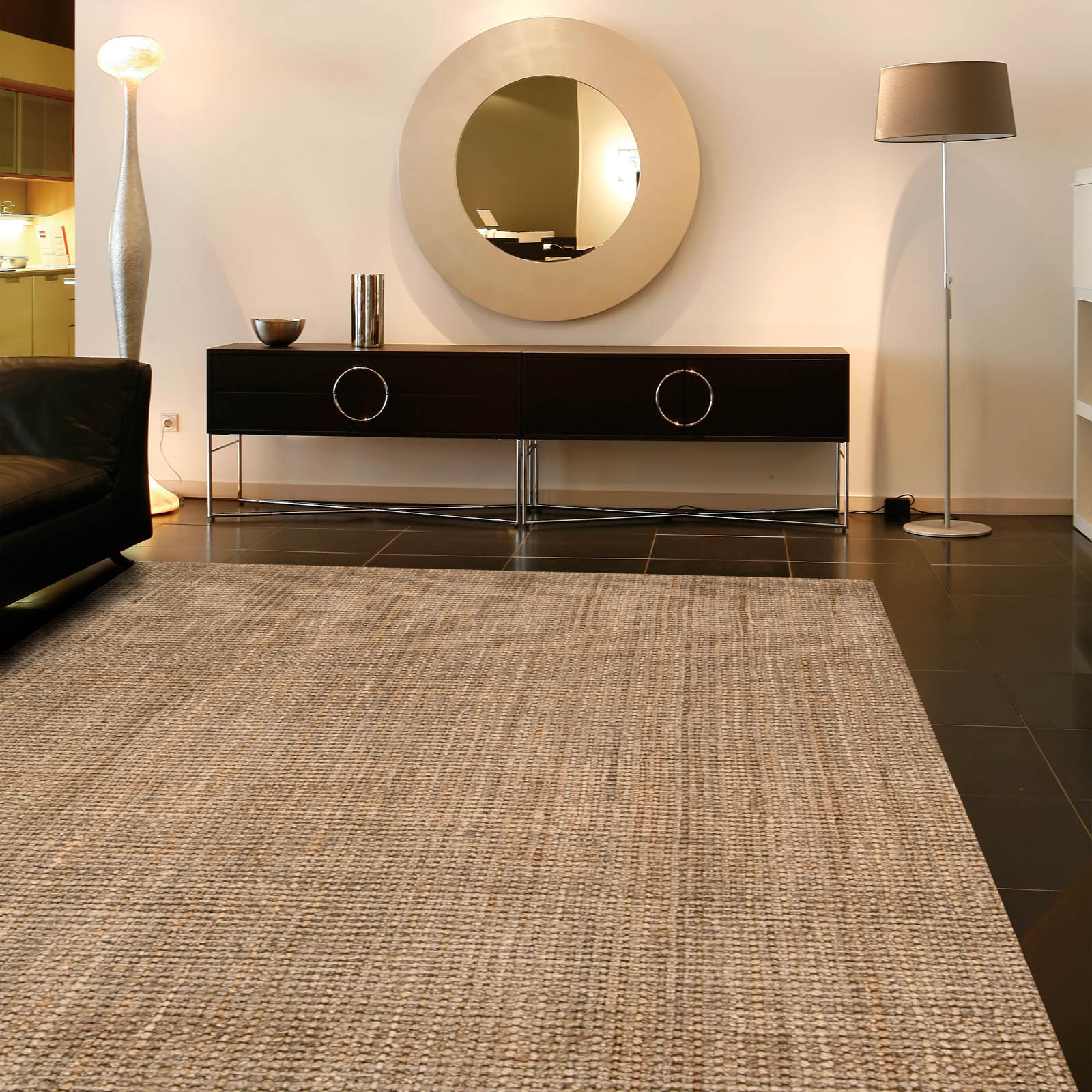
Tracking allergens into your home will be absorbed by most other rugs, but Jute rugs go a step further. Jute rugs, like this one above, are made from non-toxic fibres that actually work to repel dust mites!
So if you’re prone to dust allergies – then Jute rugs are the perfect rustic choice for your home.
The Benefits Of Professional Rug Cleaning
Professional rug cleaning goes beyond what your regular vacuum or home steam cleaner can do. A professional rug cleaning serves the purpose of removing stains, dirt, odours and allergens. They can help you freshen your rugs, eliminate odours and prevent matting – and it may be the best option for high pile rugs.
They will also help to disinfect and reduce the number of allergens in the air, creating a hygienic environment for you and your family.
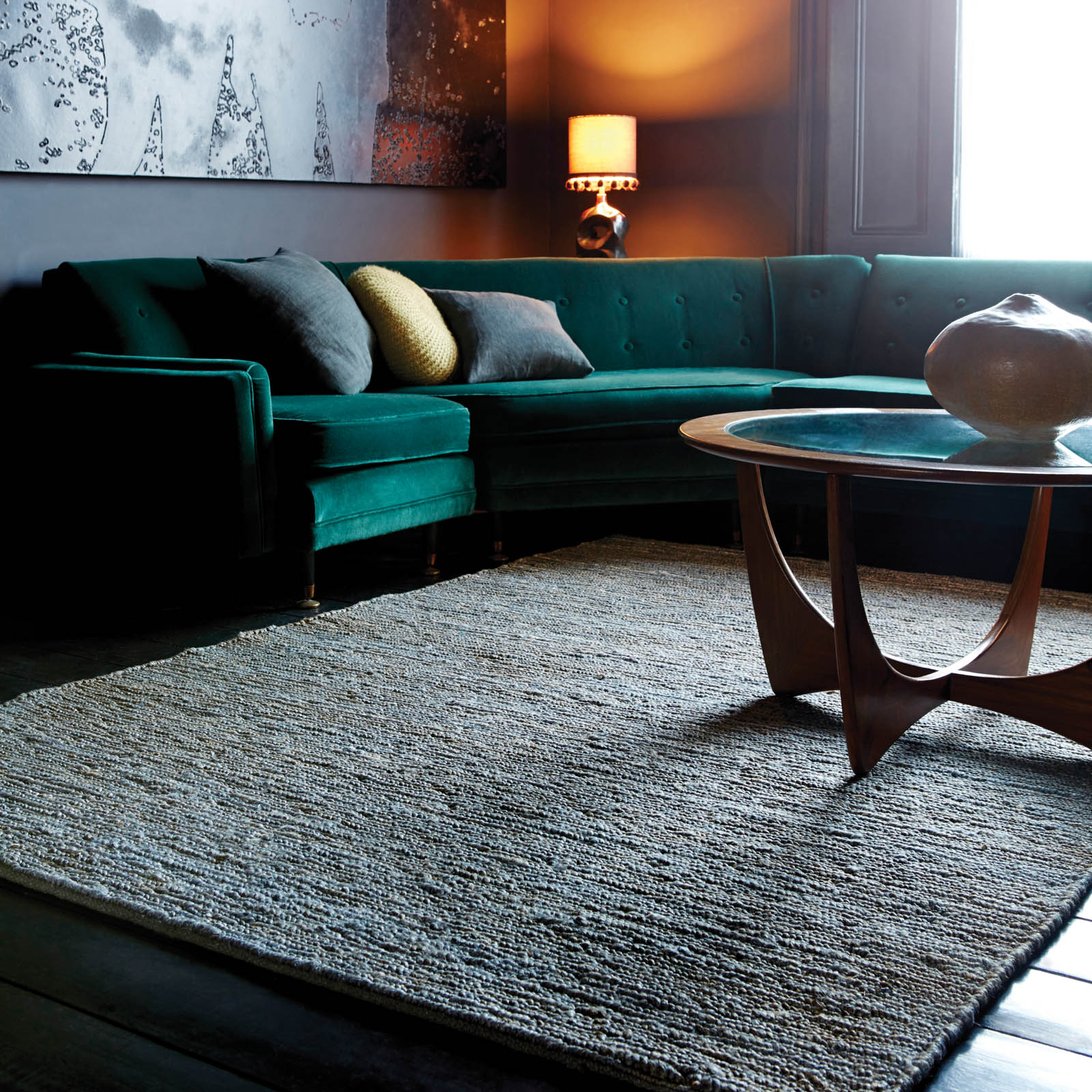
Additional Tips
When buying a new rug, there are several steps you can take to prevent aggravating allergies. For one, make sure that you unroll and air-out the rug in a well-ventilated area before laying it down. This can prevent any loose threads or particles being released in the air as an irritant.
Additionally, have any sensitive individuals leave your home during and immediately following the ventilation. Once placed, be sure to ventilate the room properly by opening windows and using fans to increase the amount of fresh air exchanged in the room. This will send away dust and other particles that came with the rug.
For asthma sufferers, it is important they get the best air they can and a well-maintained rug is the best choice for flooring.
If you have small children, it’s especially important to take the precautions mentioned above. For one, children’s immune systems are more sensitive to foreign substances like the ones found in rugs. In addition, small children spend a lot of their time either on the ground or standing not too far from it.
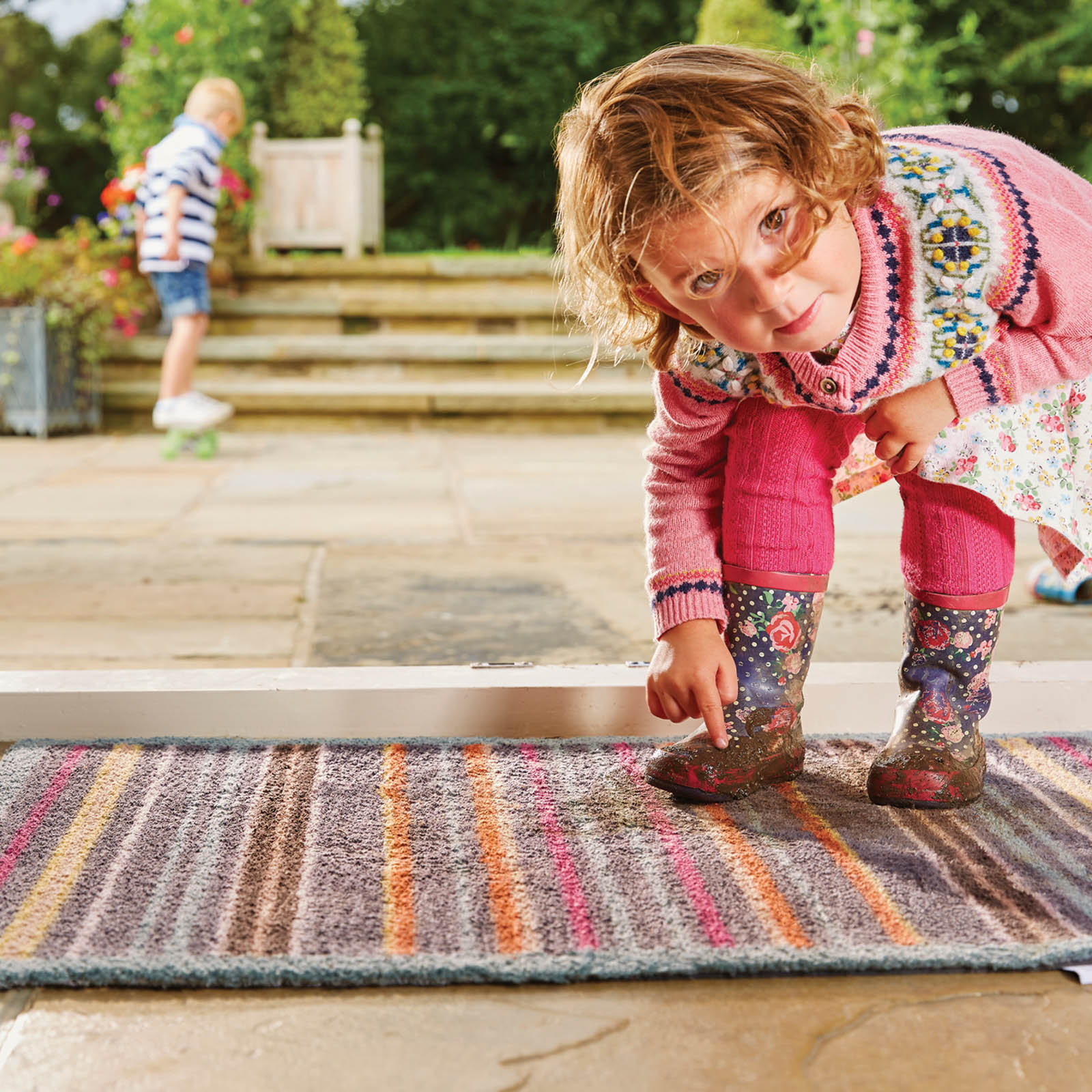
If you have a persistent sneeze that just isn’t going away, have a look at your rugs or carpets. Rug allergies are often overlooked but can be something that has a big effect on your life, when there really are easy ways to combat it.
Visit our blog and social media pages for more tips, advice and new product features.
For more information on how to protect and take care of your rugs you can visit https://www.therugseller.co.uk/care/
Rug Care Related Posts
How To Choose The Best Rug: Living Room, Hallway, Kitchen
Rug Care Guide – How to look after a rug
How To Choose A Rug To Suit The Style And Decor Of Your Home

Leave A Comment